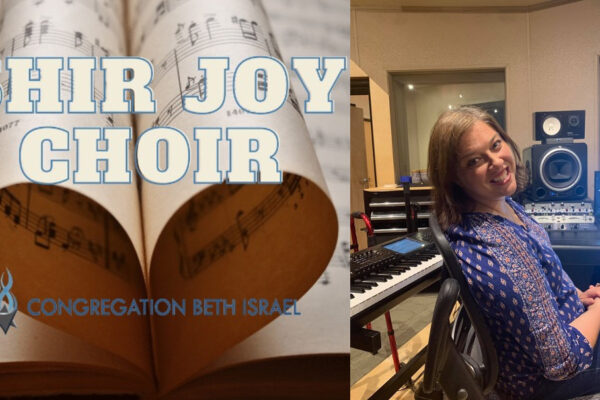BY ROBIN WOLFE
It may come as a surprise, but the planning for the musical liturgy of our High Holy Day services takes place the minute N’ilah concludes each year.
“The creative process for the High Holidays is active throughout the entire year and is very collaborative,” according to longtime High Holy Day music director and accompanist Jackie Huber. “As soon as services are over, Cantor Ettinger and I make notes about what we may want to change for the next year,” she added.
Jackie explains that there is a menu of programming for each service and the order of the musical pieces. “We look at what should be solo, choir, and congregational moments,” she said, adding that there are different moods for pieces. Jackie works closely with Cantor Seth Ettinger and the Shir Joy choir members to develop the music and make it meaningful for the congregation. The musical component of High Holy Day services is rich in both tradition and innovation and is central to the overall experience.
The choral music tradition of Judaism dates back to Temple times when, according to Cantor Ettinger, a Levitic choir made up of men between the ages of 20 and 50 would sing the Psalms that were specifically designed to accompany the daily sacrifice. Each choir member would have to prepare for five years to learn the correct melodies and inflections. The choir’s purpose was to represent the angels who were present when God would render whether or not the sacrifices would be accepted. Though we know the choir existed, no one would have heard them outside of the Kohanim or Levi’im who were present during the sacrifice. After the Temple was destroyed, it would not be until the 16th century that the choral tradition would emerge again in Jewish ritual worship.
Significantly, Jackie points out that the choir is not performing during our services in the traditional sense of professional musicians and singers on a stage, but rather they are the bridge to the congregation as a community that comes together and participates. “The congregation really steps into what we are doing,” she said. “Throughout the services, there are invitations to congregants to become involved and see themselves as part of it,” Jackie said. That is why words are put on a screen to enable congregants to sing along. “There are times to listen, but there are many times to participate,” she added.
Covid and its impact on High Holy Day services was a big unknown for most of the year. “We didn’t know what services would look like,” she said. Every aspect was up in the air for a long time, including whether there would be a full choir or partial choir and where services would occur. “What we did know was that musical choices still had to be made, and we continued to move forward,” she said.
She said that Cantor Ettinger just wrote a new piece for the first musical moment of the service, and she is excited about the creativity and flow of the music this year. “Our musicians have been so great about being flexible and learning new pieces, and it’s been an intense undertaking,” she said. Even masks are an issue to be considered. Jackie points out that there are special masks for singers with added layers and a form that allows the mask to sit away from the lips. “Every step of the way, there has been a sense of gratitude from the choir,” she said. Despite the logistics challenges that come with being in a new venue, the choir has stepped up, she said.
For Jackie, who is Christian, services have become a special part of her life for 22 years. “Not many people get to experience two faiths as intimately as I do, and I’m so grateful,” she said. “I feel part of the Christian community and the Jewish community,” she added.
When we gather for High Holiday services, sing a little louder and know that your participation is not only important to you but to many others who want to make the entire experience more meaningful through music.


